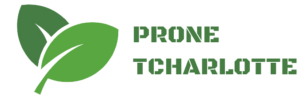It’s always a smart idea to check in on your finances after the first half of the year to see where you stand, but it’s even more crucial to do so in 2021 because of the pandemic’s impact on our finances.
You may have depleted your emergency fund last year if you were one of the millions who lost their job, or perhaps the reopening-induced spending surge is hitting your wallet extra hard this summer. Maybe the pandemic has shifted your financial priorities and you want to accelerate your debt payoff.
These three areas of your personal finances — emergency funds, spending and debt — are what Elisabeth Kozack, managing director at Marcus by Goldman Sachs, says individuals should pay attention to during their midyear financial checkup.
Your emergency fund
An emergency fund is essentially a savings account you set aside to cover any unexpected expenses, such as a surprise medical bill, sudden car maintenance or a home repair. By having an emergency fund to fall back on, you are financially prepared for when things go wrong so you don’t have to withdraw funds from your checking account or long-term investments.
The midyear mark is a good time to reassess how much you have in your emergency fund, especially if you have tapped into it within the last year and a half.
Kozack suggests keeping the following best practices in mind when reviewing your money:
- First, consider your budget and where you can reallocate funds to savings.
- From there, schedule an automatic transfer to your savings account every time you get paid that works within your budget — even if it’s $25 a month.
- Next, make sure your money is working smart. Keeping your emergency fund in a high-yield savings account can be a great option to earn interest and still have access to your cash.
- Finally, think about the timing of when you may receive any additional income, such as a quarterly sales bonus, and consider increasing your emergency fund.
Select analyzed and compared dozens of savings accounts offered by both online and brick-and-mortar banks. We found that the best high-yield savings accounts have an above-average APY for all customers (no matter your balance), are FDIC-insured, have zero monthly maintenance fees and low (or no) minimum balance requirements:
How much should go into your emergency fund?
Just how big your emergency fund needs to be depends largely on your individual situation: your monthly expenses and bills, your income and your family size, Kozack explains. The general rule of thumb is to have three to six months’ worth of living expenses in your emergency fund, but even putting aside only a few hundred dollars per month is a good goal to have when you can’t save as much as three to six months of expenses.
Economist Emily Gallagher, an assistant professor of finance at the University of Colorado Boulder, suggests a $2,467, or 1-month-income, emergency savings target for low-income savers (American households making less than 200% of the poverty line, or about 30% of the working U.S. population) in her co-authored 2019 report, “Rules of Thumb in Household Savings Decisions.”
Gallagher argues that those who have a minimum amount of $2,467 saved have a lower probability of financial hardship and are less likely to fall behind on paying rent, bills or medical care in the future.
Your spending
To make sure you are staying in control of your finances, Kozack suggests reevaluating where your money is going as the country continues to reopen.
“It’s time to ask, ‘Is this a need or a want — and where can I put that extra money?’” she says.
Now that individuals are able to travel and see friends and family more than they could a year ago, it’s only normal that your lifestyle “wants” will increase. By checking in on your spending midyear, you can see how your spending patterns are shifting and just how much more (or less) money is coming out of your bank account as we continue into summer.
To find other areas to cut back on so you can enjoy getting back to normal, consider unsubscribing from those recurring expenses you added during quarantine that you may no longer need, Kozack adds. These expenses may include virtual fitness classes or streaming subscriptions — divert the money saved on cancelling these services towards building back up your emergency fund or paying off debt.
Cash-back credit cards reward you for making purchases by putting money back into your wallet. Cardholders of the new, no-annual-fee Citi Custom Cash℠ Card can get 5% cash back on their top spending category, plus a $200 welcome bonus after spending $750 on purchases in the first three months of account opening. The bonus offer will be fulfilled as 20,000 ThankYou® Points, which can be redeemed for $200 cash back.
And if you are booking a lot of travel, sign up for the Chase Sapphire Preferred® Card’s 60,000-point welcome bonus that you can earn after spending $4,000 on purchases in the first three months from account opening.
Your debt management
More than a quarter of Americans (28%) identify paying off debt over the next six months as their biggest financial priority, according to Marcus by Goldman Sachs’ recent consumer sentiment study.
If the pandemic has led you to prioritizing your debt payoff, now is the time to check in on your progress or strategy for doing so.
“It’s important to consider two things when prioritizing debt in your payment strategy,” Kozack says. One, know that not all debt is equal since different loans have different interest rates, and two, consider that everyone needs some type of emergency fund.
Prioritize paying off the higher-interest debt, like credit card debt, since that is costing you more the longer it goes unpaid. And, before accelerating your debt payoff, make sure you already have an emergency fund set aside. An unexpected financial emergency will just end up increasing your debt and hinder your efforts to pay it down, Kozack explains.
A debt consolidation loan is helpful in paying off existing debt across accounts, including credit cards, student loans and other installment loans.
With an Upstart Personal Loan, applicants who have insufficient credit history and no credit score can apply. And if you do have a credit score, Upstart is open to borrowers with fair credit (minimum 600 score).
Our methodology
To determine which high-yield savings accounts offer the best return on your money, Select analyzed dozens of U.S. savings accounts offered by online and brick-and-mortar banks, including large credit unions. We narrowed down our ranking by only considering those savings accounts that offer an above-average APY, no monthly maintenance fees and low (or no) minimum balance requirements.
While the accounts we chose in this article consistently rank as having some of the highest APY rates, we also compared each savings account on a range of features, including ease of use and account accessibility, as well as factors such as insurance policies and customer reviews when available. We also considered users’ deposit options and each account’s compound frequency.
All of the accounts included on this list are FDIC-insured up to $250,000. Note that the rates and fee structures for high-yield savings accounts are not guaranteed forever; they are subject to change without notice and they often fluctuate in accordance with the Fed rate. Your earnings depend on any associated fees and the balance you have in your high-yield savings account. To open an account, most banks and institutions require a deposit of new money, meaning you can’t transfer money you already had in an account at that bank.











